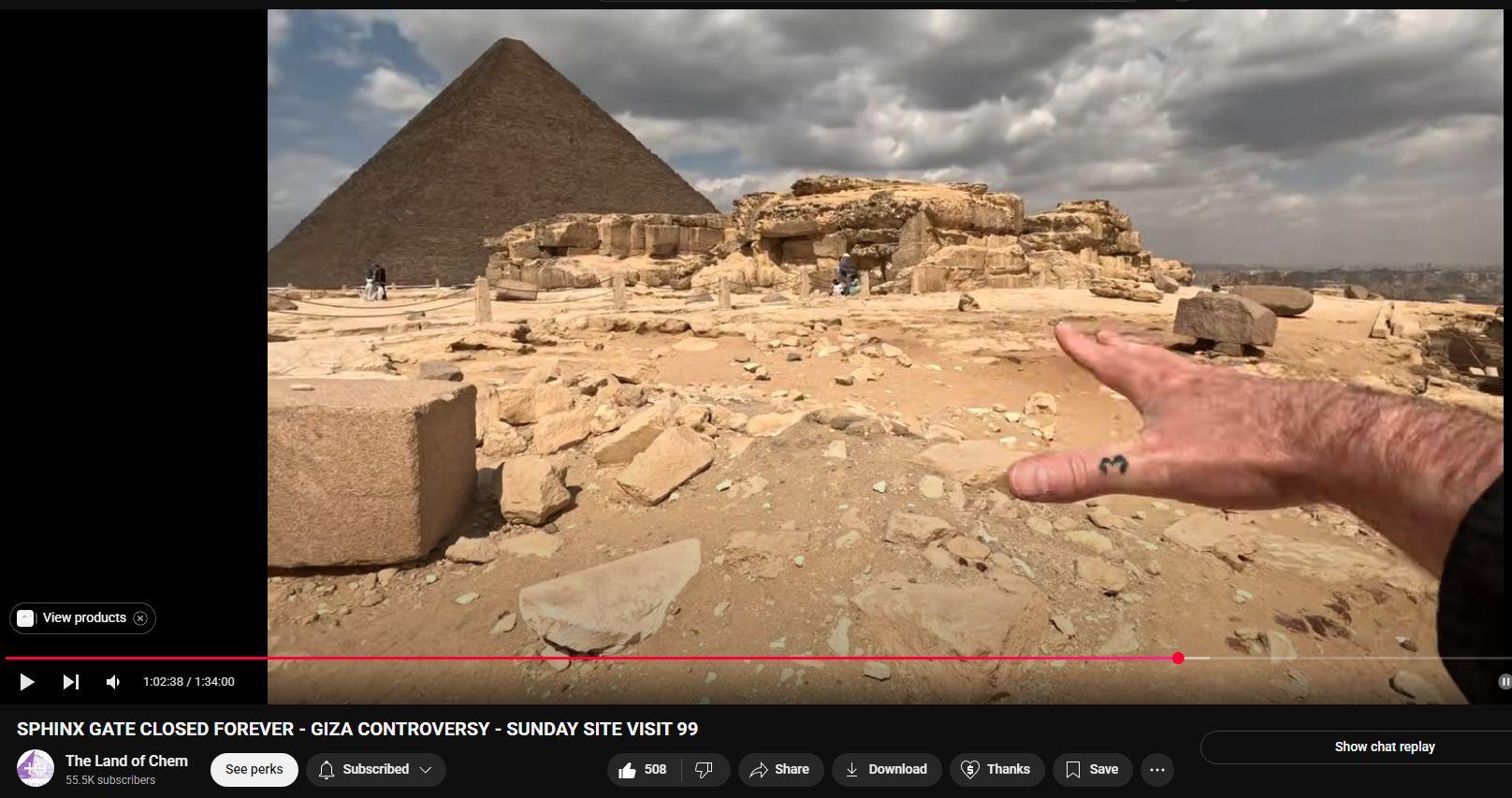Realizing Giza Complex as Industrial Chemical Production Facility
Geoffrey Drum’s amazingly thorough analyses and detailed hypotheses inclusively explain allllll aspects of the Giza Complex: Pyramids, Plateau, Subterra.
This youtube channel contains many dozens of lengthy videos, many boots-on-ground exploring aspects never (yet seen) presented by any other visitors or researchers.
https://www.youtube.com/watch?v=A4eX5HFineU
Those afraid of the Truth will go to Great lengths to hide it.
If you somehow think there’s “a lot of trash” thereabouts (of which I didn’t see any!), you need to recalibrate by taking a gander at downtown Baltimore, Maryland, a total disgrace.
This content is hands-down some of the very best on youtube. Thank you for sharing with the world.
The Lichtenberg iron ore veins almost seem secondary, like run-off or refuse. The monumental effort to make flat the basalt-surfaced area has always intrigued me. Imagine if that was ‘the main reaction’ area – maybe for gold / silver separation or processing, and the iron / veins / Lichtenberg was the effluent.
The massive scale of operations combined with preciseness of chemistry — there was seemingly no experimenting or playing around. This complex was made from established knowledge, certainty of success. That indicates aged wisdom.
Red granite channel seems as if it must have been some kind of delivery system for necessary reagent.. Maybe clean water for camel power? Not being facetious.
It’s interesting that in a desert the iron rusts insanely quickly.
The rectangular constructs with liquid-pits / cisterns and/or well shafts, the uniformity, the layout. It reminds of a segmented community garden. Were facilities ‘rented out’ for prospectors working at metal extraction? The industrial-scale processing / manufacturing paradigm comes into stronger focus with each new integrated revelation. Keep on!
Top of the line Tesla / battery powered car — on a full charge, in US state of Texas, it can run 4 hours, but only 2 hours with air conditioning turned on, and only 1 hour with heater turned on. LOL.
Traditional Sphinx gate and Menu House are on the east and north edges, respectively, nearest the pyramids. The new, official and only gate is absurdly to the far southwest, at least seven times distant from the pyramids, and with apparently very much land tightly controlled / state-owned so that profits from tourists can be maximally captured. What an awful turn of events and shabby grab by the government. There’s an article on 4sci ORGanization site.

ABOVE: Concern about closing of “Sphinx Gate” and the touristy, long-used walk up to the Giza plateau. Suspected closing down / disuasion of walkabout access to the site.
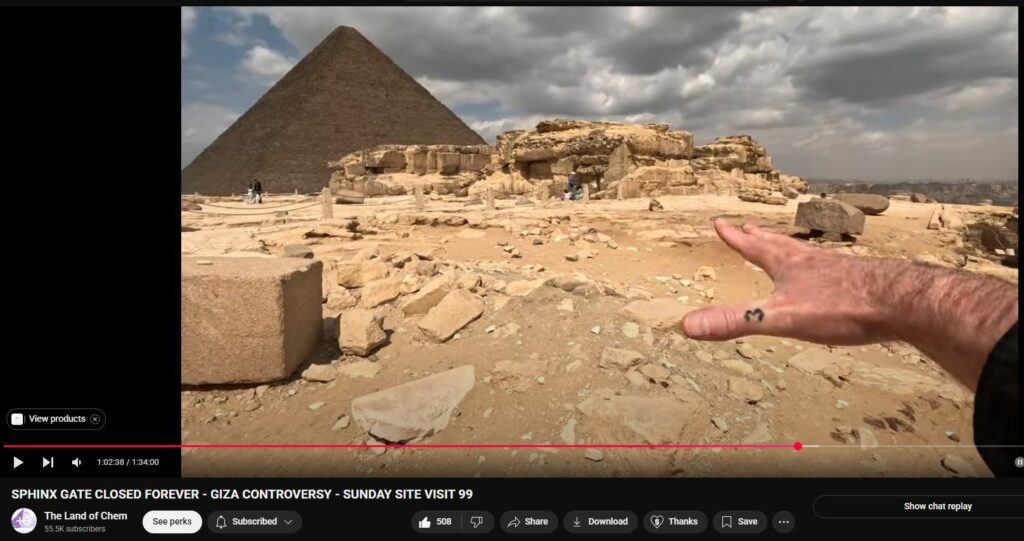
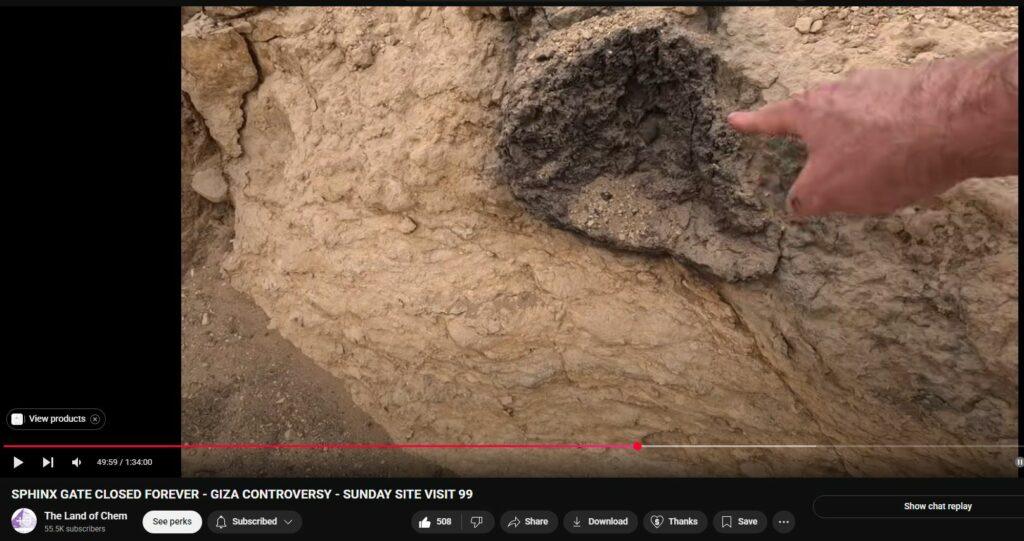
ABOVE: One of many (thousands?) of Lichtenberg-like iron ore veins; lightning is theorized to have played central role in chemistry workings at the Giza Complex.
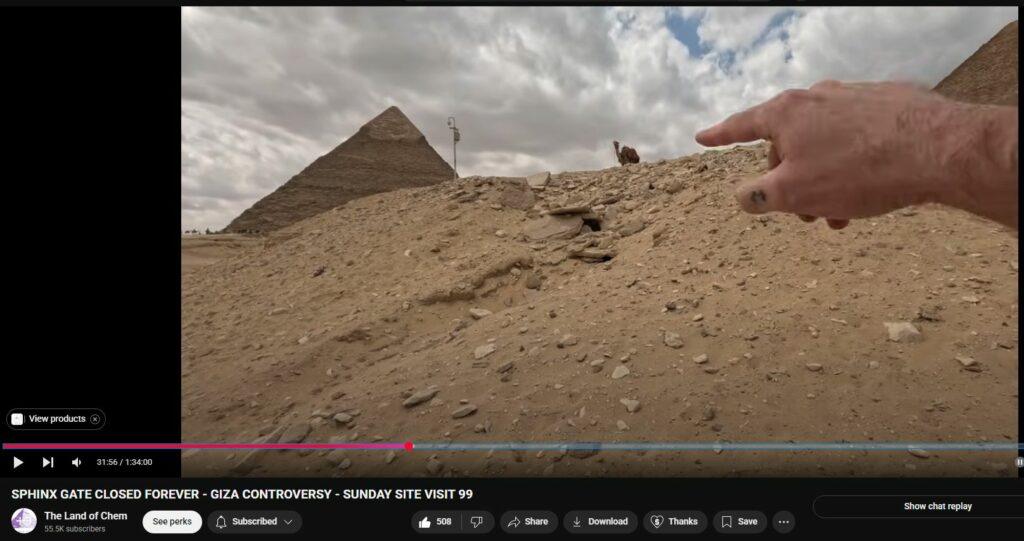
ABOVE: Suspected entrance to subterranean passage(s). Giza Complex is theorized to have hundreds possibly thousands of deep shafts, underground passages, mineral veins, troughs, pipings.
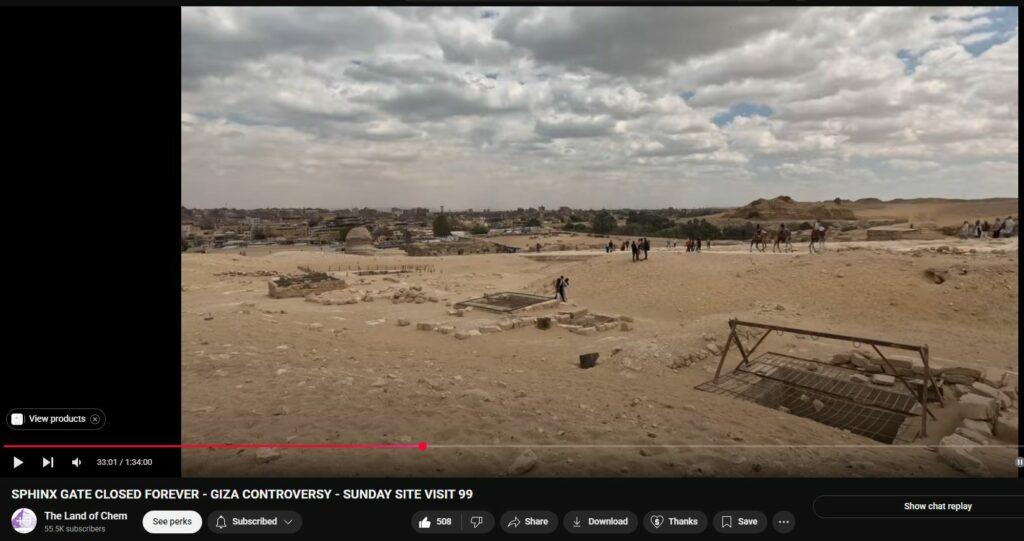
ABOVE: Many deep shafts permeate the plateau and evidence a far more complex undertaking than is commonly portrayed or considered.
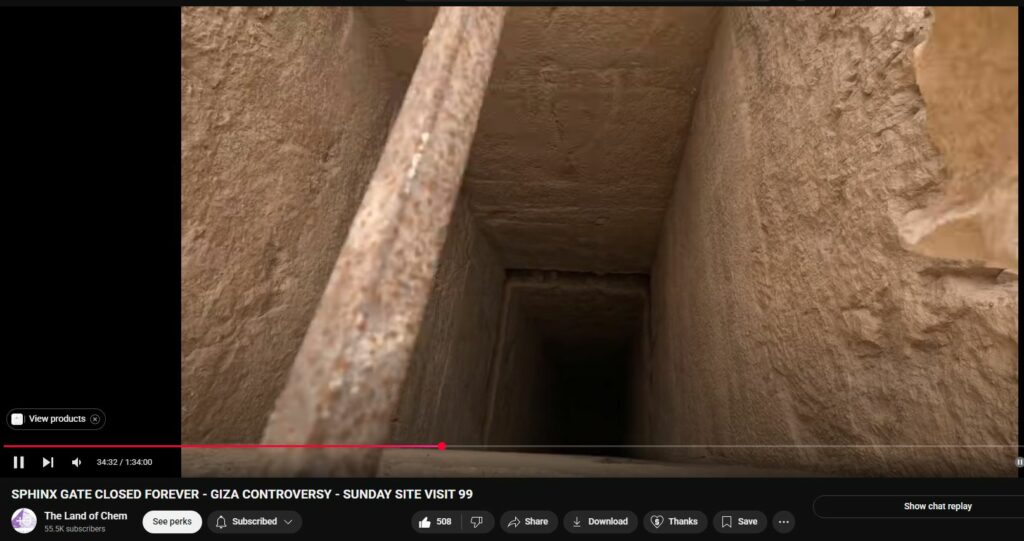
ABOVE: Deep wells abound and are theorized to be interconnected below.
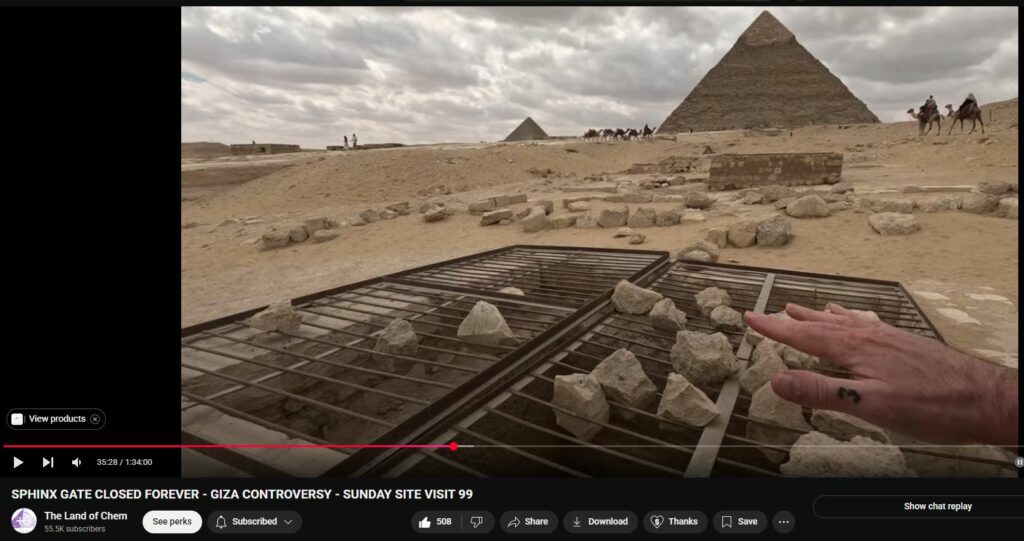
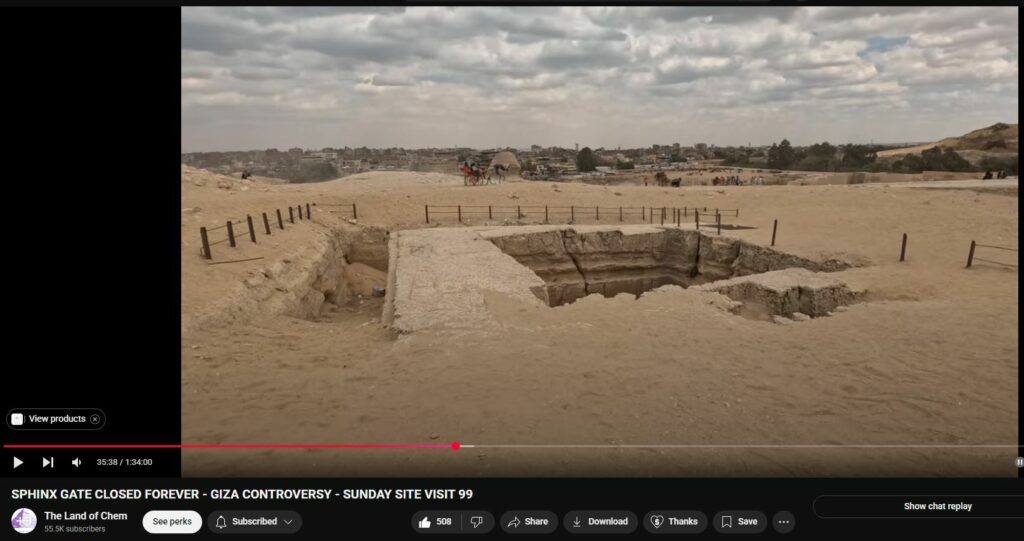
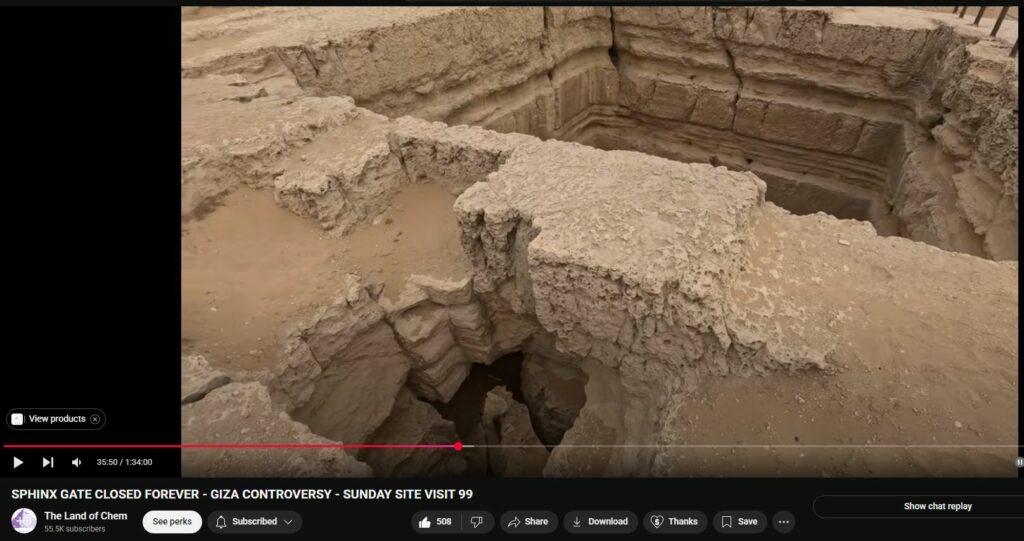
ABOVE: Multi-stage constructs may have allowed controlled chemical mixing, akin to our flasks and beakers and containers in modern chemical works.
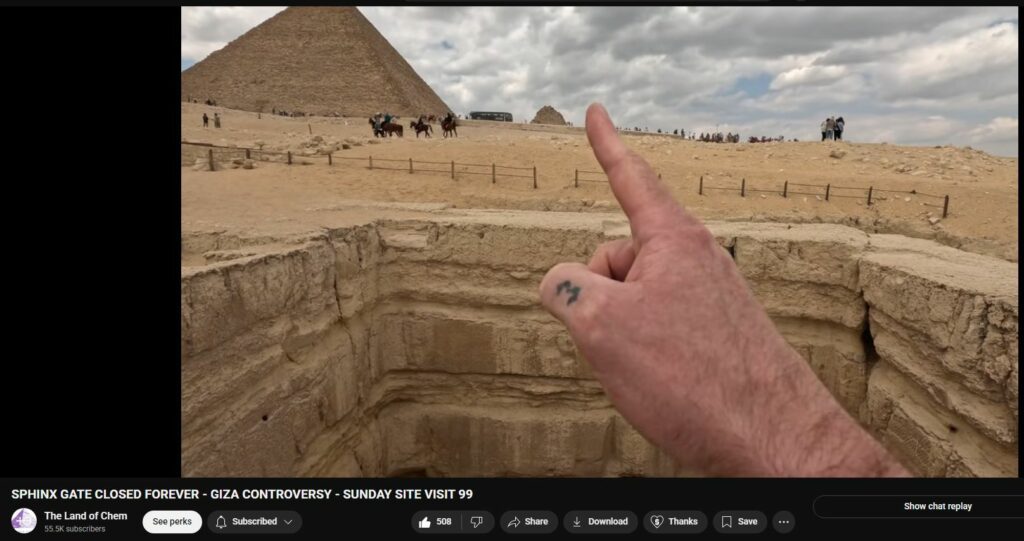
ABOVE: Gravity-propelled subterra systems.
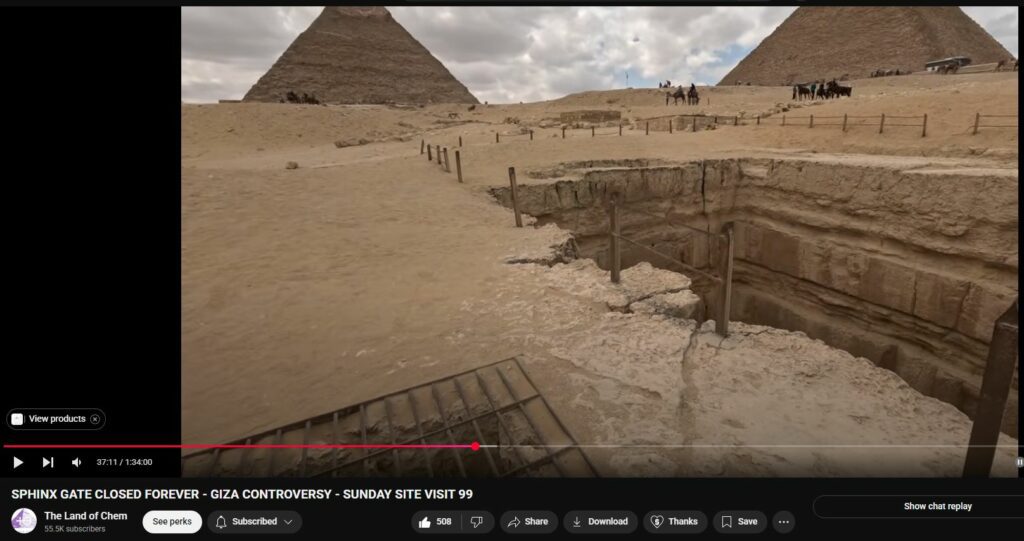
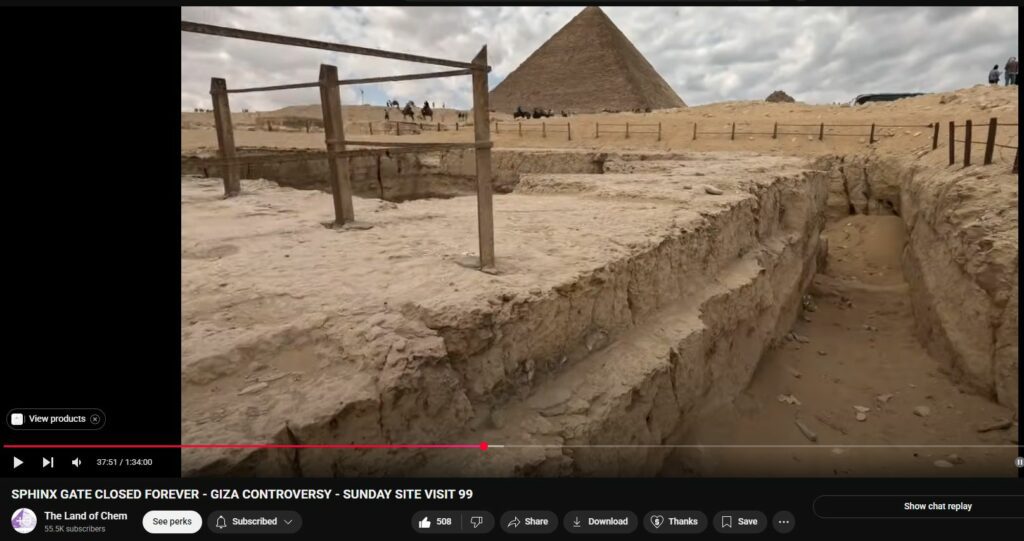
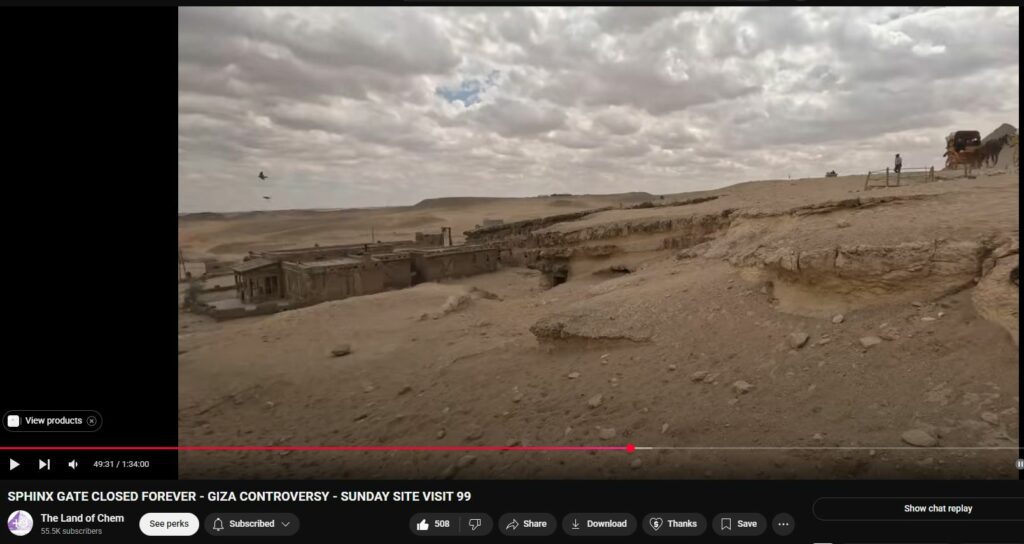
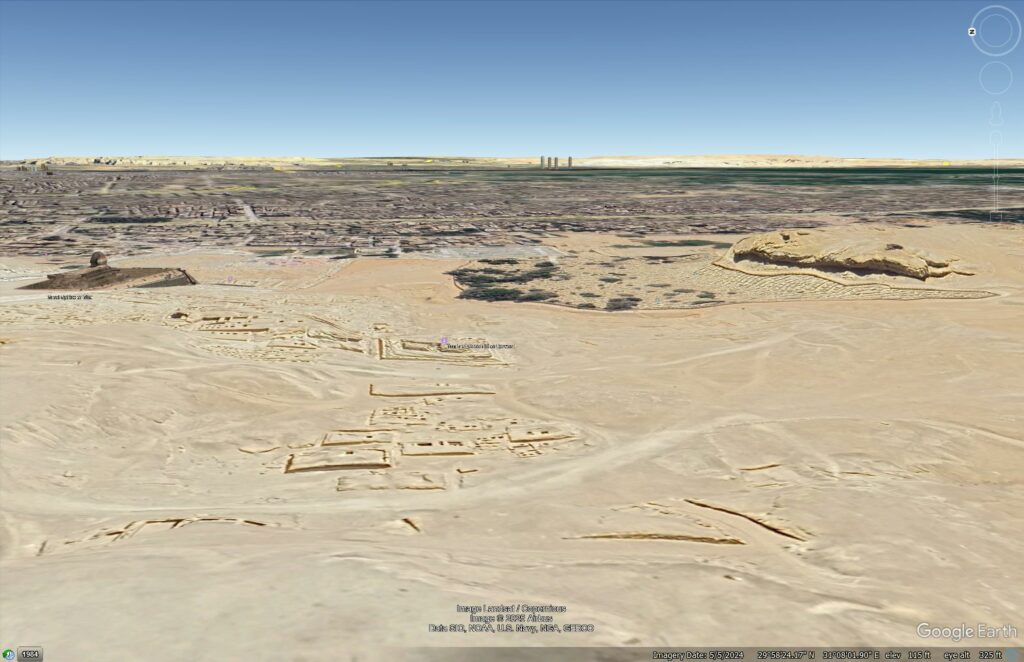
Regarding the closing of the nearest-to-pyramids Mena House and Sphinx Gates and forced singular official gate to the distant southwest
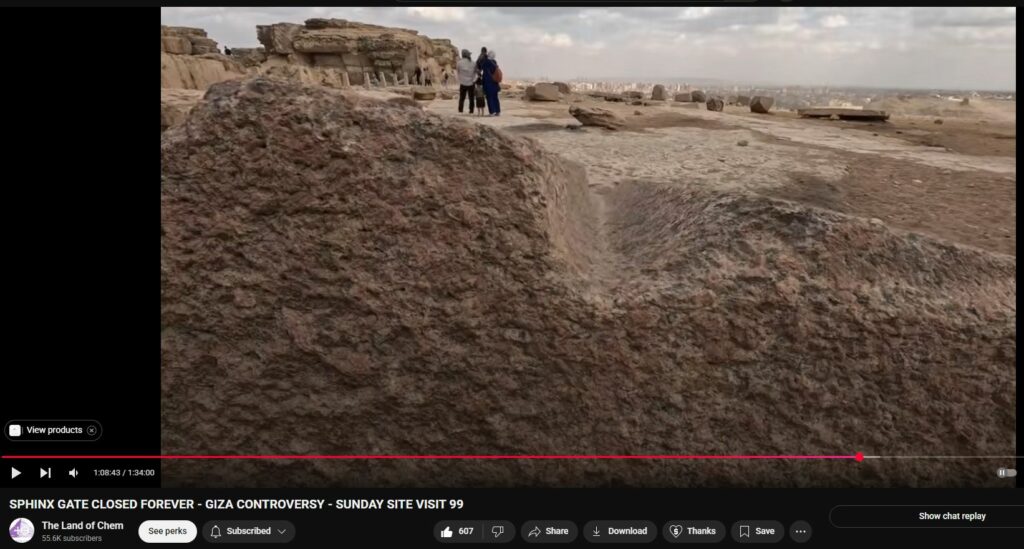
ABOVE: Channel in red granite seems to have been distributing necessary reagent; perhaps a trough of fresh water for camel power?
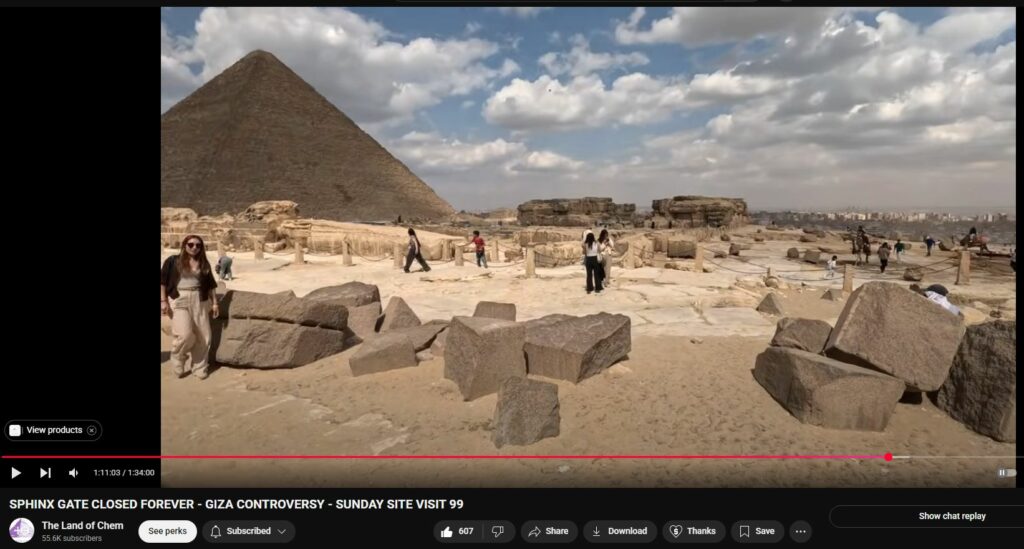
ABOVE: Were the stone-built structures to the right of the Great Pyramid used as laboratories?
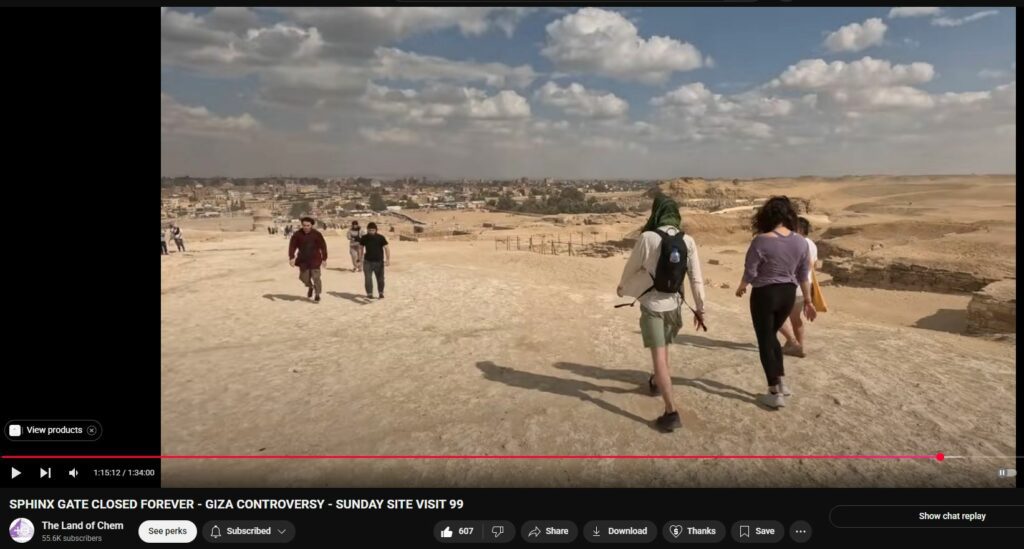
ABOVE: The vastness of the plateau, the angled drop-off allowing gravity-propelled sloughing of effleutn from industrial-scale chemical processes.

ABOVE: Geoff and wyeff walking down the causeway perhaps for last exit thru the now closed Sphinx Gate.
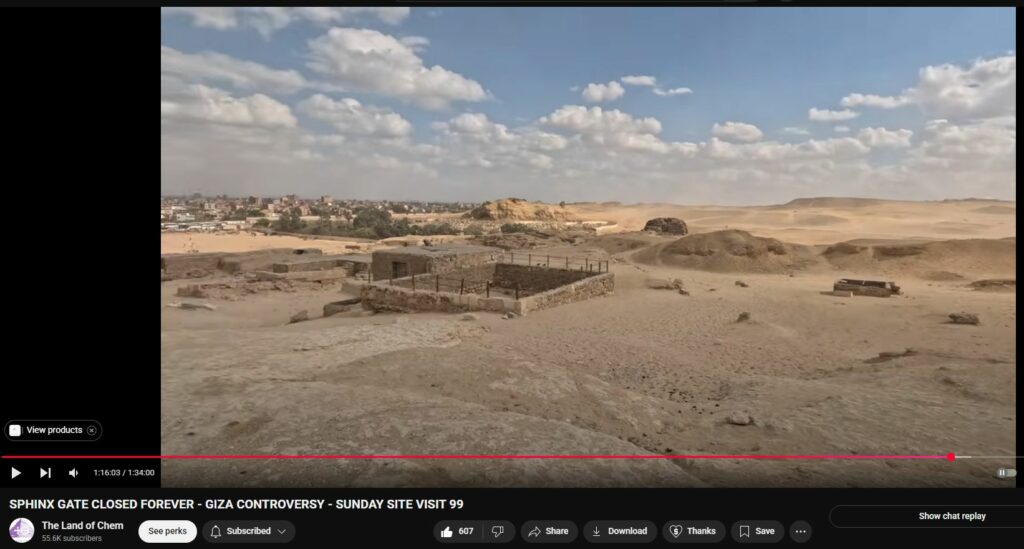
ABOVE: Deep pits positively permeate the complex. Drainage? Doesn’t seem likely as troughs would have worked better and were more easily realized, kempt. Storage? Seems more likely, though limestone is porous and leaky. Was subterranean fresh water more prevalent in the past? Pyramid built in Ohio unexpected caused formation of surrounding lake, as if the gravity/weight or perhaps electromagnetic features of the pyramid drew the water up; was similar at work in Giza?
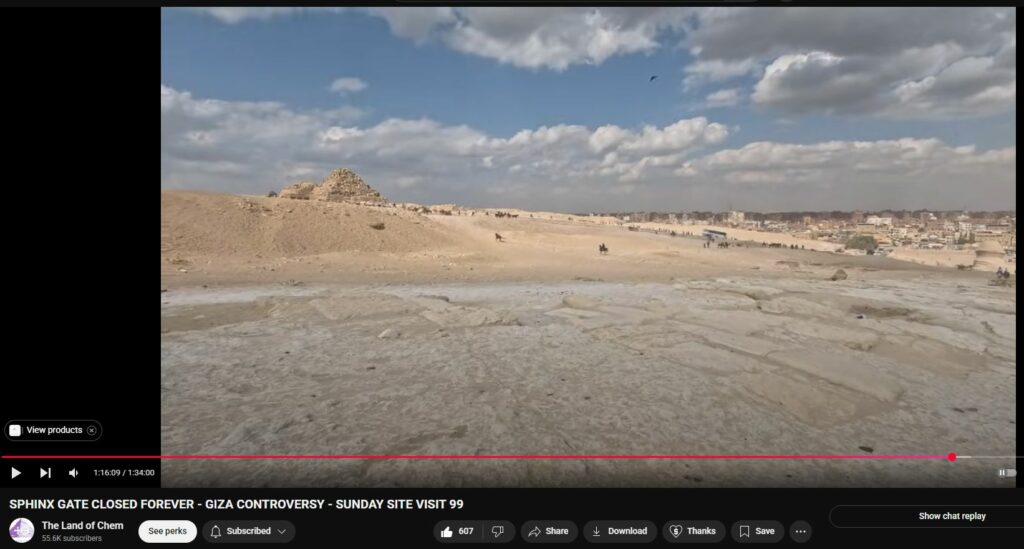
ABOVE: The causeway from central pyramid down to Nile River delta floor. “Paved” for efficient movement of manufactured goods out/down and sundry supplies in/up?

ABOVE: Desert climate yet all iron insta-rusts. Is there some electromagnetic phenomenon at work?
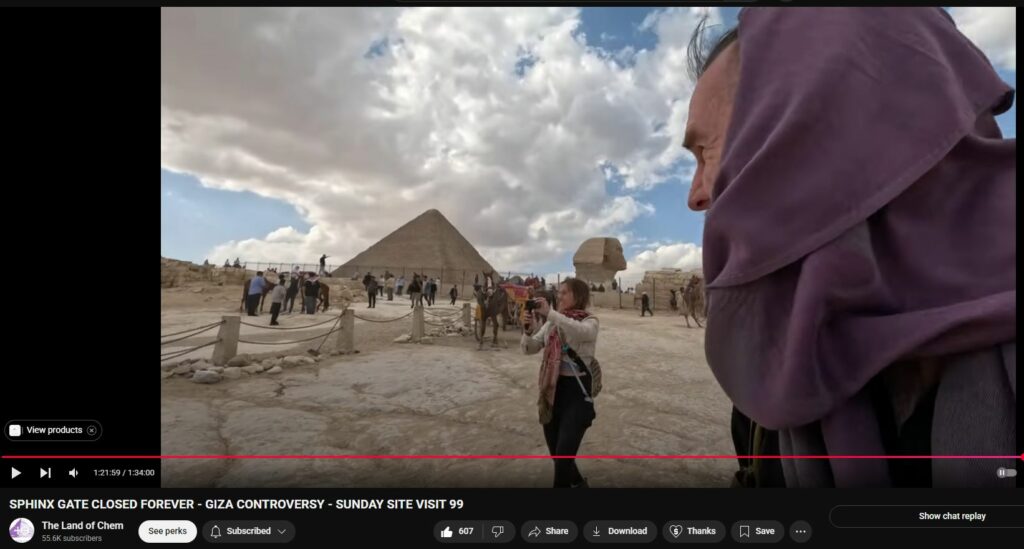
ABOVE: Iconic approaches now closed in favor of singular (and far more distant) access via government controlled acreage to the far southwest (beyond and to the left of the pyramids).
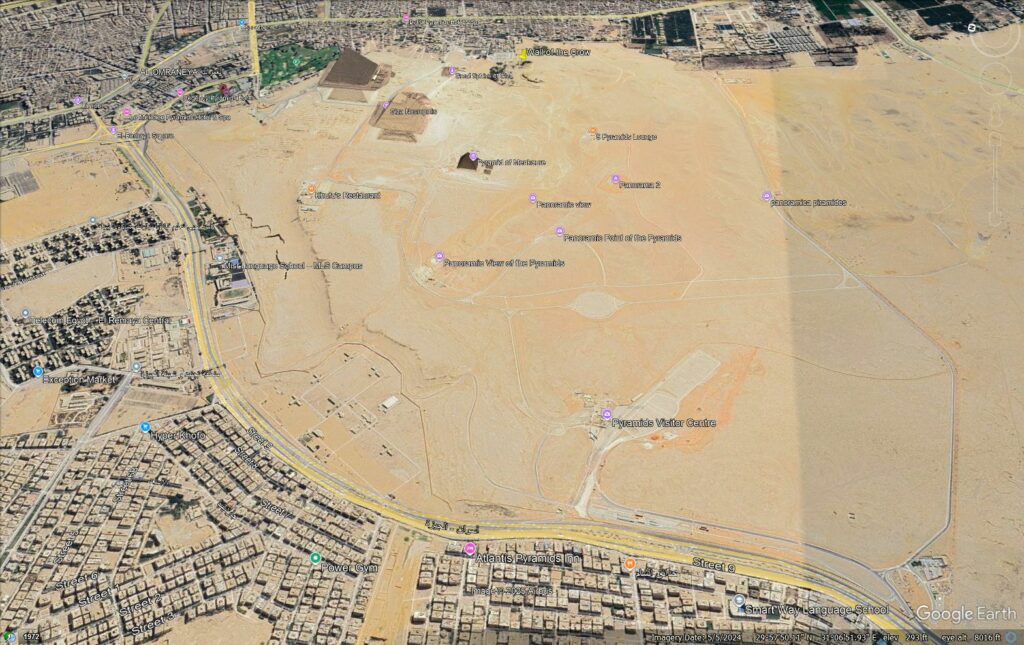
ABOVE: The insane new, sole official entry gate, to the far southwest and at least 7 times distance from pyramids as are (now closed) Menu House and Sphinx gates, with all land government owned and tightly controlled (and yet to be developed).
